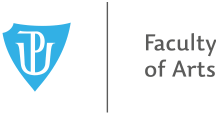Diskuze v psychologii 2021, 3(1):29-35 | DOI: 10.5507/dvp.2021.003
Scénář tikající bomby
- Katedra psychologie FF UP, Křížkovského 10, 779 00 Olomouc, Česká republika
Cílem výzkumné studie bylo prozkoumat postoje ke scénáři tikající bomby a vliv oboru studia, pohlaví, víry a míry jistoty, že zadržený ví relevantní informace. Výzkum byl prováděn pomocí kvantitativní metodologie a ke sběru dat byla použita část dotazníku od WorldPublicOpinion.org a část vlastní konstrukce. Výzkum byl prováděn na vysokoškolských studentech a respondenti byli vybíráni nepravděpodobnostními metodami sběru dat. Bylo získáno 519 respondentů, z toho 167 mužů a 352 žen. Dále byli respondenti děleni na 203 studentů pomáhajících profesí a 308 jiných profesí. Jako věřící v Boha se označilo 143 respondentů. V tomto výzkumu se prokázala statistická významnost u vlivu typu oboru i víry. Zatímco u pohlaví či výše zmíněné míry jistoty byla objevena dokonce velmi vysoká statistická významnost. Souhrnně by se tedy dalo říct, že byl vliv oboru studia, pohlaví, víry i míry jistoty, že zadržený ví relevantní informace, na postoje ke scénáři tikající bomby potvrzen.
Klíčová slova: scénář tikající bomby, postoje, mučení, pomáhající profese, pohlaví, víra
The ticking bomb scenario
The goal of this research was to explore the attitudes towards the ticking bomb scenario and the influence of the chosen fields of study, gender, faith and the extent of certainty the culprit has about being given the relevant information. This study was undertaken using quantitative methodology and a part of a questionnaire done by WordPublicOpinion.org was included in the collection of data along with an original construction. University students were the main subjects of the study, chosen by random sampling. From 519 respondents 167 were men and 352 women. They were further divided to 203 students of helping professions and 203 of other professions. There were 143 subjects of religious faith. The influence of chosen fields and faith proved to be statistically significant. Furthermore, gender and the extent of certainty proved to be highly statistically significant. In summary we can say that the influence of chosen fields of study, gender, faith and the extent of certainty that the culprit has about being given the relevant information towards the ticking bomb scenario was proven.
Keywords: ticking bomb scenario, attitudes, torture, helping profession, gender, religion
Vloženo: 15. březen 2021; Revidováno: 16. červenec 2021; Přijato: 25. srpen 2021; Zveřejněno online: 16. září 2021; Zveřejněno: 1. listopad 2021 Zobrazit citaci
Reference
- Ajzen, I. (2005). Attitudes, personality and behavior. New York: Open University Press.
- Association for the Prevention of Torture (nedat.). The ticking bomb scenario. Získáno 5. 8. 2019 z https://www.apt.ch/en/ the-ticking-bomb-scenario/
- Armor, D. J., & Mayer, J. D. (2019). Commentary US attitudes toward torture: Commentary on Kenneth S. Pope, 2019. European Psychologist, 24(2), 204-205. doi: 10.1027/ 1016-9040/a000366
 Přejít k původnímu zdroji...
Přejít k původnímu zdroji... - Constanzo, M. A., & Gerrity, E. (2009). The effects and effectiveness of using torture as an interrogation device: Using research to inform the policy debate. Social Issues and Policy Review, 3(1), 179-210. doi: 10.1111/j.1751-2409.2009.01014.x
 Přejít k původnímu zdroji...
Přejít k původnímu zdroji... - Dubin, K., Milewski, A. R., Shin, J, & Kalman, T. P. (2017). Medical students' attitudes toward torture, revisited. Health and Human Rights Journal, 19(2), 265-277. Získáno z https://www.ncbi.nlm.nih.gov/pmc/articles/PMC5739375/
- Europol. (19. srpna 2011). TE-SAT 2011: EU terrorism situation and trend report 2011. Získáno z https://www.europol.europa.eu/activities-services/main-reports/te-sat-2011-eu-terrorism-situation-and-trend-report
- Europol. (6. července 2015). TE-SAT 2015: European Union terrorism situation and trend report 2015. Získáno z https://www.europol.europa.eu/activities-services/main-reports/european-union-terrorism-situation-and-trend-report-2015
- Europol. (27. června 2019). European Union terrorism situation and trend report 2019. Získáno z https://www.europol.europa.eu/activities-services/main-reports/terrorism-situation-and-trend-report-2019-te-sat
- Hassner, R. E. (2018). The myth of the ticking bomb. The Washington Quarterly, 41(1), 83-94. doi: 10.1080/ 0163660X.2018.1445367
 Přejít k původnímu zdroji...
Přejít k původnímu zdroji... - Homant, R. J., & Witkowski, M. J. (2011). Support for coercive interrogation among college students: Torture and the ticking bomb scenario. Journal of Applied Security Research, 6, 135-157. doi: 10.1080/19361610.2011.552002
 Přejít k původnímu zdroji...
Přejít k původnímu zdroji... - Houck, S. C., & Conway III., L. G. (2015). Ethically investigating torture efficacy: A new methodology to test the influence of physical pain on decision-making processes in experimental interrogation scenarios. Journal of Applied Security Research, 10(4), 510-524, doi: 10.1080/19361610.2015.1069636
 Přejít k původnímu zdroji...
Přejít k původnímu zdroji... - Kira, A. I. (2017). Critical outlook at torture definition, structure, dynamics, and interventions. Peace and Conflict: Journal of Peace Psychology, 23(3), 328-333. doi: 10.1037/pac0000243.
 Přejít k původnímu zdroji...
Přejít k původnímu zdroji... - Lifton, R. J. (2017). The nazi doctors: Medical killing and the psychology of genocide. New York: Basic Book.
- Mayer, J. D., & Koizumi N. (2016). Is there a culture or religion of torture? International support for brutal treatment of suspected terrorists. Studies in Conflict & Terrorism, 1-15. doi: 10.1080/1057610X.2016.1235352
 Přejít k původnímu zdroji...
Přejít k původnímu zdroji... - O'Mara, S. (2015). Why torture doesn't work: The neuroscience of interrogation. London: Harvard University Press.
 Přejít k původnímu zdroji...
Přejít k původnímu zdroji... - United Nations (2015). Všeobecná deklarace lidských práv. Získáno z https://www.osn.cz/wp-content/uploads/2015/12/UDHR_2015_11x11_CZ2.pdf
- WorldPublicOpinion.org. (2009). Majority of americans approve complete ban on torture. Získáno 13. 10. 2019 z http://worldpublicopinion.net/majority-of-americans-approve-complete-ban-on-torture/
Tento článek je publikován v režimu tzv. otevřeného přístupu k vědeckým informacím (Open Access), který je distribuován pod licencí Creative Commons Attribution 4.0 International License (CC BY 4.0), která umožňuje distribuci, reprodukci a změny, pokud je původní dílo řádně ocitováno. Není povolena distribuce, reprodukce nebo změna, která není v souladu s podmínkami této licence.



